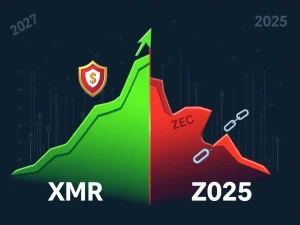Ethereum News Today: GENIUS Act Unleashes $4 Billion Stablecoin Surge

The cryptocurrency world is buzzing with unprecedented activity, thanks to a landmark piece of U.S. legislation. In just seven days, the passage of the GENIUS Act has ignited a colossal $4 billion stablecoin surge, pushing the total market value to an astounding $264 billion. This isn’t just a fleeting moment; it’s a pivotal shift, particularly for those closely following Ethereum news and the broader digital asset landscape. It signals a new chapter where regulatory clarity is paving the way for mainstream integration, attracting traditional financial powerhouses and setting the stage for remarkable growth.
The GENIUS Act: What’s Sparking This Crypto Revolution?
At the heart of this transformative period lies the U.S. crypto legislation, aptly named the GENIUS Act. Signed into effect on July 19, 2025, this law establishes a federal regulatory framework specifically for fiat-backed stablecoins. For years, the crypto market operated under a cloud of regulatory uncertainty, a significant deterrent for banks, asset managers, and institutional investors looking to enter the space. The GENIUS Act directly addresses this by providing clear guidelines on compliance requirements, effectively lowering the barriers to entry for traditional financial entities. This comprehensive framework includes:
- Full Reserve Backing: Mandating that stablecoin issuers hold reserves equivalent to the value of the stablecoins they issue, ensuring stability and trust.
- Regular Audits: Requiring consistent, transparent audits to verify reserve holdings and operational integrity.
- Licensing Requirements: Establishing a clear licensing process for stablecoin issuers, bringing them under federal oversight.
This clarity is a game-changer. It means that traditional financial institutions can now confidently explore and launch regulated stablecoin products without fear of navigating a fragmented or ambiguous legal landscape. The act’s focus on robust standards aims to foster innovation while significantly mitigating risks, a balance long sought by industry leaders and regulators alike.
Unpacking the $4 Billion Stablecoin Surge: A New Era for Digital Currency?
The immediate impact of the GENIUS Act has been nothing short of spectacular. Within a week of its enactment, the stablecoin market witnessed an impressive $4 billion stablecoin surge, propelling its total valuation to $264 billion. This rapid expansion underscores the pent-up demand for regulated digital assets and the market’s positive response to clear legal guidelines. Fiat-backed stablecoins, which represent approximately 85% of the market, are the primary beneficiaries of this legislation. Tokens like Tether’s USDT and Circle’s USDC continue to dominate this category, holding a combined market capitalization of $227 billion. Their compliance with the GENIUS Act’s mandates for full reserves and regular audits has solidified their position and enhanced investor confidence. Brian Armstrong, CEO of Coinbase, echoed the sentiment of many industry proponents in a May interview with Yahoo Finance, emphasizing that stablecoin innovation should be universally accessible, stating, “I think everybody should be able to create stablecoins” [2]. This vision aligns perfectly with the Act’s broader objective of encouraging competition and innovation while simultaneously fortifying market stability. The remarkable growth signifies a maturing market, moving beyond speculative trading towards a more structured and integrated financial ecosystem.
Institutional Adoption: Are Traditional Banks Finally Embracing Crypto?
Perhaps one of the most exciting developments stemming from the GENIUS Act is the accelerated pace of institutional adoption. With regulatory clarity now in place, major players from Wall Street and the traditional financial sector are making decisive moves into the stablecoin space. This is a clear indicator that digital assets are no longer a niche interest but are becoming an integral part of mainstream finance. Here are some key examples:
- Anchorage Digital: On July 22, the first federally chartered crypto bank launched a stablecoin issuance platform in collaboration with Ethena Labs. This partnership brings Ethena’s USDtb into the U.S. market under the new regulatory framework, marking a significant step for regulated digital asset issuance.
- WisdomTree: This prominent Wall Street asset manager introduced USDW, a dollar-backed stablecoin designed specifically for dividend-paying tokenized assets. WisdomTree is positioning itself as an early and strategic entrant in the regulated stablecoin arena, showcasing the potential for innovative financial products.
- Major Banks: Bank of America, JPMorgan, and Citigroup have all confirmed their plans to issue dollar-backed stablecoins. While they are still aligning with the Act’s specific requirements, their commitment signals a profound shift in their approach to digital currencies.
U.S. Treasury Secretary John Doe has even gone so far as to forecast that the stablecoin market could skyrocket to $2 trillion by 2028 under this new regulatory environment [1]. This ambitious projection hinges on the successful integration of stablecoins into traditional banking systems, a process that is now clearly underway, albeit in its initial stages. The influx of these established financial giants lends immense credibility and liquidity to the digital asset space, promising further expansion and innovation through increased institutional adoption.
Navigating Crypto Regulation: How the U.S. is Shaping the Future
The GENIUS Act’s influence extends far beyond immediate market growth; it fundamentally reshapes the landscape of crypto regulation. While the primary focus remains on fiat-backed stablecoins, the legislation also implicitly acknowledges the complexities and risks associated with other types of digital assets. Algorithmic stablecoins, for instance, which rely on complex algorithms to maintain their peg, are notably excluded from this immediate regulatory framework. Lawmakers are planning separate treatment for these, a prudent decision given their inherent fragility, painfully demonstrated by the Terra ecosystem collapse. Commodity-backed stablecoins, such as Pax Gold, remain a niche segment but are increasingly viewed as potential inflation hedges, despite facing liquidity challenges.
A critical aspect of the GENIUS Act is its mandate for robust risk-mitigation measures. These include stringent reserve requirements and comprehensive audit standards, designed to prevent systemic instability and combat illicit activities like money laundering. These provisions are in line with global efforts to strike a balance between fostering innovation and safeguarding consumer protection. Interestingly, the U.S. approach emphasizes a comparatively lighter regulatory touch compared to the European Union’s more comprehensive MiCA (Markets in Crypto-Assets) framework. This distinction could potentially accelerate adoption within the U.S. but may necessitate future adjustments if unforeseen risks emerge or if global regulatory harmonization becomes a higher priority in the realm of crypto regulation.
Beyond Bitcoin: What Does This Mean for Ethereum News and Its Ecosystem?
While Bitcoin often captures headlines, the recent regulatory clarity has had a profound impact on the Ethereum ecosystem, making it a hot topic in Ethereum news. Since early July, Ethereum-based investment vehicles have attracted an impressive $4 billion in net inflows [2]. This surge reflects a strong sense of optimism tied directly to the newfound regulatory certainty. Investors and developers are increasingly confident in building and investing within an environment where the rules are clear and the future appears more predictable. This trend stands in stark contrast to Bitcoin’s recent performance, where inflows have stalled amidst market consolidation. Analysts suggest that stablecoin growth is less reliant on speculative trading and more driven by genuine institutional adoption and supportive regulatory frameworks [6]. As stablecoins become integrated into traditional finance, Ethereum’s role as the leading smart contract platform becomes even more critical. Its robust infrastructure and vibrant DeFi ecosystem are perfectly positioned to host and facilitate the burgeoning stablecoin market, further solidifying its importance in the evolving digital economy. The ability to tokenize assets and integrate stablecoins into broader financial systems is accelerating, with Ethereum at the forefront of this innovation, making it a key player in current Ethereum news.
The passage of the GENIUS Act marks a truly pivotal moment in the evolution of digital finance. It has not only triggered an immediate and significant stablecoin surge but has also laid down a foundational framework that encourages responsible innovation and widespread institutional adoption. While challenges related to scalability, interoperability, and trust remain, the newfound clarity in crypto regulation has set the stage for unprecedented growth. For those tracking Ethereum news, this legislation presents immense opportunities, reinforcing its position as a cornerstone of the decentralized future. The journey towards a fully integrated digital financial system has just taken a monumental leap forward, promising a future where digital assets are as commonplace and reliable as traditional currencies.
Frequently Asked Questions (FAQs)
1. What is the GENIUS Act and when was it signed into law?
The GENIUS Act is U.S. crypto legislation signed into effect on July 19, 2025. It establishes a federal regulatory framework specifically for fiat-backed stablecoins, providing clarity on requirements like full reserve backing, audits, and licensing for banks, asset managers, and institutional investors.
2. How much has the stablecoin market grown since the GENIUS Act was passed?
Within just seven days of the GENIUS Act’s passage, the stablecoin market experienced a $4 billion surge in supply, pushing the market’s total value to $264 billion. This rapid growth highlights the positive market response to regulatory clarity.
3. Which major financial institutions are entering the regulated stablecoin space?
Several major players are now entering the regulated stablecoin market. Examples include Anchorage Digital, which launched a stablecoin issuance platform with Ethena Labs, and WisdomTree, which introduced its dollar-backed stablecoin USDW. Major banks like Bank of America, JPMorgan, and Citigroup are also preparing to issue dollar-backed stablecoins.
4. How does the GENIUS Act impact Ethereum and its ecosystem?
The GENIUS Act has positively impacted the Ethereum ecosystem. Since early July, Ethereum-based investment vehicles have seen $4 billion in net inflows, reflecting optimism tied to the new regulatory clarity. Ethereum’s robust platform is well-positioned to host and facilitate the growth of regulated stablecoins and DeFi applications.
5. What are the future projections for the stablecoin market under this new regulation?
U.S. Treasury Secretary John Doe has forecasted that the stablecoin market could potentially reach $2 trillion by 2028 under the new regulatory environment established by the GENIUS Act. This projection depends on the successful integration of stablecoins into traditional banking systems.
6. Does the GENIUS Act cover all types of stablecoins?
No, the GENIUS Act primarily focuses on fiat-backed stablecoins. Algorithmic stablecoins, which maintain value through algorithmic adjustments, are currently excluded from this immediate regulatory framework, with lawmakers planning separate treatment due to their historical fragility. Commodity-backed stablecoins are also a niche category not directly covered by this specific framework.










